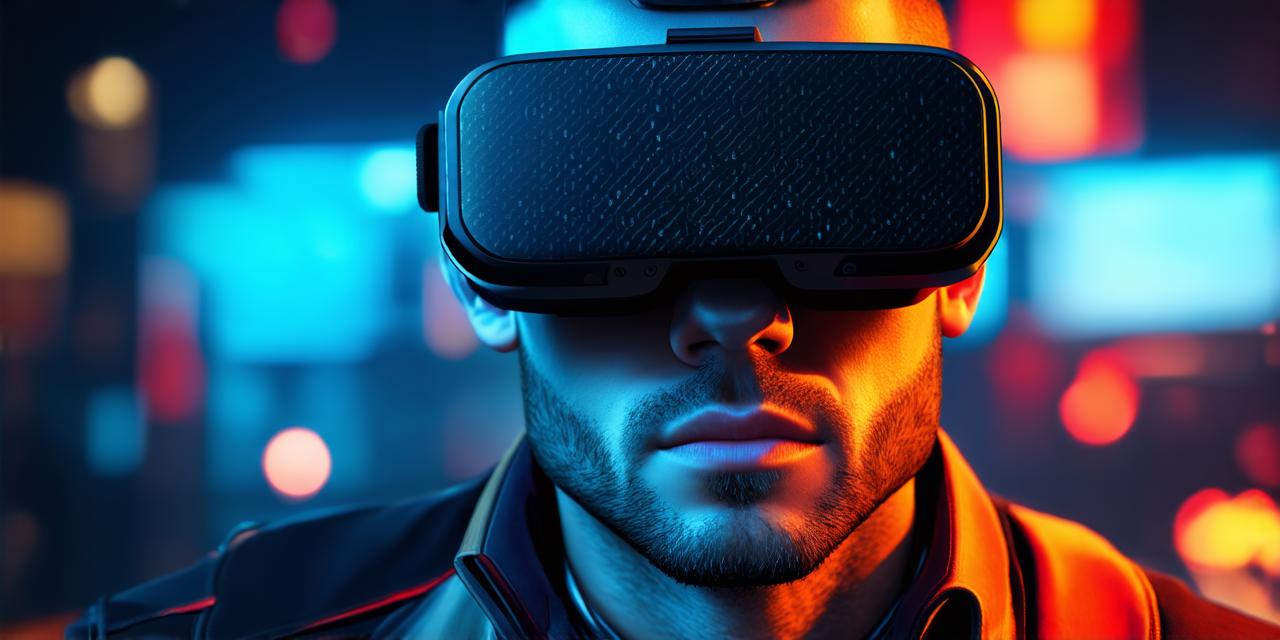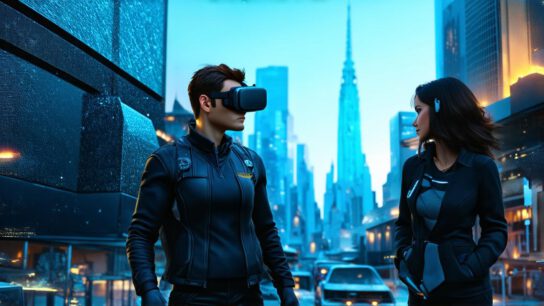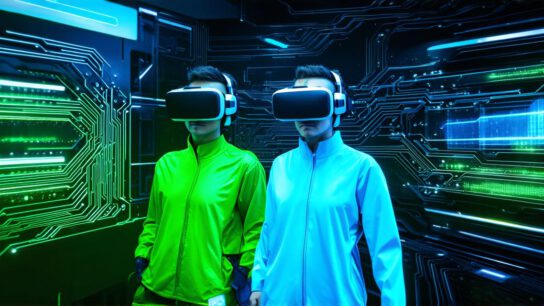<!DOCTYPE html>
I. Introduction
Virtual reality technology first emerged in the 1960s, but it wasn’t until the 2010s that VR became widely available and accessible to consumers. Since then, the adoption of VR has grown exponentially, with millions of people around the world now using this immersive technology for gaming, entertainment, education, and more.
As a VR developer, it’s essential to understand the impact that your creations can have on society. In this guide, we will explore the various ways in which VR is affecting society, including its potential benefits and drawbacks. We will also provide actionable insights for VR developers to create positive change and ensure that their creations are used responsibly and ethically.
II. The Benefits of Virtual Reality on Society
A. Enhancing Learning and Education
Virtual reality technology has the potential to revolutionize education by providing immersive, interactive experiences that can enhance learning and retention. For example, VR simulations can be used to teach students about history or science in a more engaging and memorable way.
B. Improving Mental Health and Therapy
Virtual reality technology has also been shown to have numerous benefits for mental health and therapy. For example, VR can be used to treat anxiety disorders, post-traumatic stress disorder (PTSD), and phobias by exposing patients to controlled environments that simulate real-life situations.
C. Enhancing Entertainment and Gaming
Virtual reality technology has revolutionized the entertainment industry by providing immersive gaming experiences that transport players into new worlds and allow them to interact with characters and environments in a way never before possible.
D. Promoting Social Connection and Empathy
Virtual reality technology has also been shown to promote social connection and empathy by allowing people to interact with others in virtual environments that simulate real-life situations.
III. The Drawbacks of Virtual Reality on Society
A. Isolation and Loneliness
While virtual reality technology can provide a sense of connection and immersion, it can also lead to feelings of isolation and loneliness. For example, people who spend too much time in virtual environments may become disconnected from the real world and their social lives.
B. Privacy Concerns
Virtual reality technology also raises privacy concerns, particularly in the context of user data collection and tracking. For example, VR devices may collect information about a person’s movements and interactions in virtual environments, which could be used for targeted advertising or sold to third-party companies.
C. Physical Health Risks
Virtual reality technology can also pose physical health risks, particularly in the context of motion sickness and eye strain. For example, some people may experience nausea or dizziness when using VR devices, which could lead to headaches and other symptoms.
IV. Case Studies and Personal Experiences
A. Virtual Therapy for PTSD
One example of the benefits of virtual reality technology is its use in treating post-traumatic stress disorder (PTSD). For example, a study published in the journal Nature Communications found that VR exposure therapy was as effective as traditional exposure therapy in reducing symptoms of PTSD in veterans. In addition, some veterans have reported feeling more comfortable and controlled during VR exposures compared to traditional exposures, which may be due to the immersive nature of VR technology.
B. Virtual Reality Education
Another example of the benefits of virtual reality technology is its use in education. For example, a study published in the journal Educational Psychology found that students who used VR simulations to learn about ancient Rome were more engaged and retained more information than students who learned through traditional methods such as lectures and textbooks.
C. Virtual Reality Gaming
Virtual reality gaming has also become increasingly popular, with millions of people around the world now using VR devices to play games. For example, some gamers have reported feeling more immersed and engaged in VR gaming experiences compared to traditional gaming platforms such as consoles and computers. In addition, virtual reality gaming can provide a unique social experience, allowing people to interact with others in virtual environments and form new friendships.
D. Virtual Reality Mental Health Therapy
Finally, virtual reality technology has been used in mental health therapy to treat conditions such as anxiety disorders, PTSD, and phobias. For example, a study published in the journal Frontiers in Psychology found that VR exposure therapy was effective in reducing symptoms of social anxiety disorder in people with the condition. In addition, some people have reported feeling more comfortable and controlled during VR exposures compared to traditional exposures, which may be due to the immersive nature of VR technology.
V. Best Practices for Virtual Reality Development
A. Consider the Impact on Society
As a VR developer, it’s important to consider the impact that your creations can have on society. Before creating any VR experience, ask yourself how it could benefit or harm people and the world around us. Consider the potential benefits and drawbacks of your creation and take steps to ensure that it is used responsibly and ethically.
B. Design for Accessibility and Inclusion
Virtual reality technology should be designed with accessibility and inclusion in mind. This means creating experiences that are accessible to people with disabilities and diverse backgrounds, and avoiding stereotypes or offensive content that could alienate certain groups of people. In addition, VR developers should strive to create experiences that promote empathy and understanding, allowing people to connect with others and gain a deeper understanding of their experiences.
C. Protect User Privacy
Virtual reality technology raises privacy concerns, particularly in the context of user data collection and tracking. VR developers should take steps to protect user privacy by being transparent about how they collect and use data, obtaining user consent for data collection, and implementing strong security measures to prevent unauthorized access or hacking.
D. Consider Physical Health Risks
Virtual reality technology can also pose physical health risks, particularly in the context of motion sickness and eye strain. VR developers should take steps to reduce these risks by providing clear instructions for use, designing experiences that are comfortable and easy on the eyes, and offering breaks or other forms of rest for prolonged use. In addition, VR developers should consider the potential physical health risks of their creations and take steps to mitigate any negative impacts.
VI. Conclusion
Virtual reality technology has the potential to transform the way we interact with the world around us, providing new opportunities for learning, exploration, and connection. However, it also raises important ethical and social considerations, particularly in the context of privacy, accessibility, and physical health risks. As VR developers, it’s important to be mindful of these considerations and take steps to ensure that our creations are used responsibly and ethically. By doing so, we can harness the power of virtual reality technology to create a better world for all.



